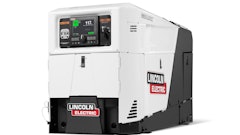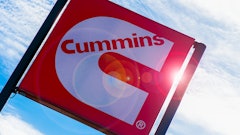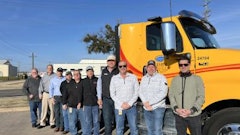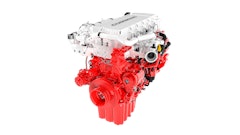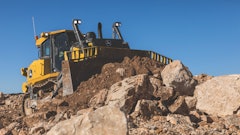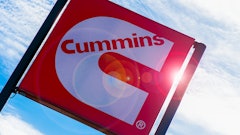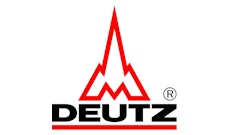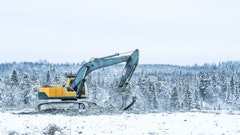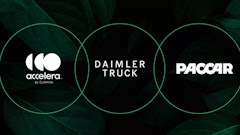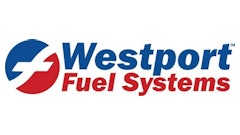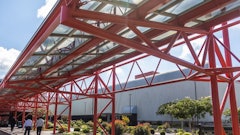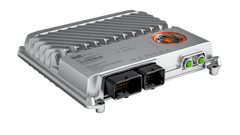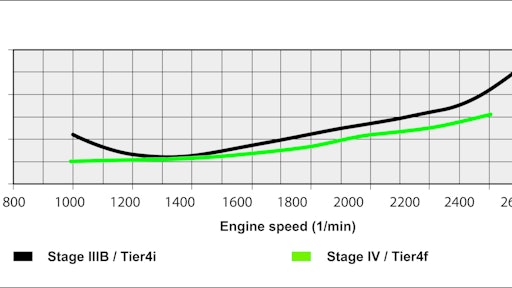

When Bell Equipment unveiled its E-Series ADT (articulated dump truck) at INTERMAT 2012, experts and customers reacted enthusiastically to the new design and advanced technology, which the ADT specialist had explicitly introduced as the blueprint for the company's complete 6x6 program going forward. Three years on and the Bell stand in Paris showcased this evolutionary concept with the prototype model of the upcoming larger E-Series trucks and the new generation of Bell B30E with its Stage IV/Tier 4 Final compliant power plant. Combining the latest engine and drivetrain technology with Bell specific innovations, the 24- and 28-tonne ADTs once again redefine the standards in productivity, safety and driver comfort for earthmoving and smaller quarrying applications.
Sustainable changes
“When introducing our new E- Series into the international markets two years ago, we opted for our proven ‘Blu@dvantage’ emission control technology, using Selective Catalytic Reduction (SCR) to meet the transitional Stage IIIB/Tier 4i (Interim) standards. This approach, with our vehicle’s performance and fuel consumption as the main motivation, was certainly the right decision seeing the successful acceptance of our small trucks in all respective European and American markets,” says Tristan du Pisanie, Bell Equipment's ADT Product Marketing Manager. However, when starting the E-series project seven years ago, the implementation of efficient emission control technologies compliant to Stage IV/Tier 4 Final was always part of the design process.
Consequently, Bell engineers evaluated all emission-relevant design and manufacture decisions in close co-operation with experts from Bell Equipment’s long-standing engine technology partner, Mercedes-Benz. “The result was a very ‘sustainable’ design, which required no changes to the attractive body lines, which still set standards in visibility and accessibility. Additionally the implementation of new engines and components hasn't affected the main characteristics of our small trucks being low nett weights, optimised load distribution, low fuel consumption as well as superior driving and loading/unloading performance; a real value proposition,” adds du Pisanie. In addition the price increase from Stage IIIB/T 4 Interim to Stage IV/Tier 4 Final has been kept considerably lower than the industry average.
The new generations of Bell B25E and B30E are now both powered by the 7.7-liter engine, OM936LA, from Mercedes-Benz. The inline 6-cylinder is an EGR engine with minimal re-circulation of cooled exhaust gas into the combustion process. This, in combination with the urea-based SCR aftertreatment system (Adblue/DEF), ensures efficient emission control without the need for diesel particulate filters (DPF). The whole system is fully monitored electronically – informing operators and service technicians continuously about functionality, liquid levels and related preventive maintenance requirements.
The new engine also improves the performance of the trucks, with both B25E and B30E featuring Allison transmissions and lockable inter-axle differentials/limited slip axle differentials - the identical drivetrain components of their Stage IIIB/Tier 4 Interim predecessors. With maximum power ratings of 210 kW (281 hp) at 2,200 rpm for the Bell B25E and of 246 kW (329 hp) at 2,200 rpm for the B30E, the real advantage lies in the trucks' maximum torque. Here the B25E is slightly improved to 1,150 Nm at 1,200 to 1,600 Nm while the Bell B30E remains at 1,300 Nm but on a substantially wider rev range from 1,150 to 1,800 rpm (used to be 1,200 to 1,600 rpm). “This wider torque curve gives us better grade ability and the even better news is that it comes with a specific fuel consumption improvement thanks to the new technology from Mercedes Benz. This is not just a theoretical calculation because we have run the new Stage IV/Tier 4F truck against the previous Stage IIIB/Tier 4I B30E in real-life applications and there is a definite improvement in cycle times along with a reduction in liters per hour. This coupled with our already low drivetrain losses ensures that our new trucks will once again excel with lowest fuel burn rates, cementing our position as leader in this crucial area,” explains du Pisanie.
Production of the Stage IV/Tier 4 Final compliant models of B25E and B30E started in January 2015 at Bell Equipment’s European ADT plant in Eisenach, Germany. Following the company's commitment to continuous development of its products, the new generation also incorporates improvements in thermal/noise insulation of the cab and new ergonomic features and other small improvements thanks to feedback from customers and dealers.
Comfortable confidence = more productivity
Introducing adaptive suspensions in 6x6-technology was one of Bell Equipment’s significant contributions to the modern ADT design and manufacture and helped to found the company’s reputation as a true ADT specialist. As standard equipment in the Bell B50D since its launch in 2004, the sensor-controlled height adjustment of the hydraulic front struts compensates for the high payload variations and set a new standard in ride comfort upon introduction. Optional two-stage rubber sandwich blocks at the third axle substantially improve unladen driving characteristics. Both “Comfort-Ride” packages are also available as options on the latest 35- and 40-tonne D-Series ADTs.
At INTERMAT 2015 Bell Equipment introduced a development of this system to give a Comfort Ride suspension option for its smaller B25E and B30E trucks as well. “We’re fully convinced that the move to a semi-independent A-frame front suspension provides our small E-Series trucks with best-in-class driving characteristics and great comfort under all loads and the Comfort Ride system improves our offering still further,” says du Pisanie.
Generally a softer suspension system gives better comfort when driving over rough ground and allows higher ground speed. However, when negotiating corners a softer suspension would result in the truck “leaning away” from the apex of the corner unacceptably. The new E-Series Comfort Ride actually leans the truck inwards towards the apex when going around corners, giving greater confidence to the operator. This, in combination with the softer suspension, enhances productivity through faster hauling cycles. Testing has shown an improvement of 29% when measuring ride comfort with accelerometers. In addition, numerous experienced operators have come away from driving the Comfort Ride B30E amazed at both the confidence it engenders and the comfort.










